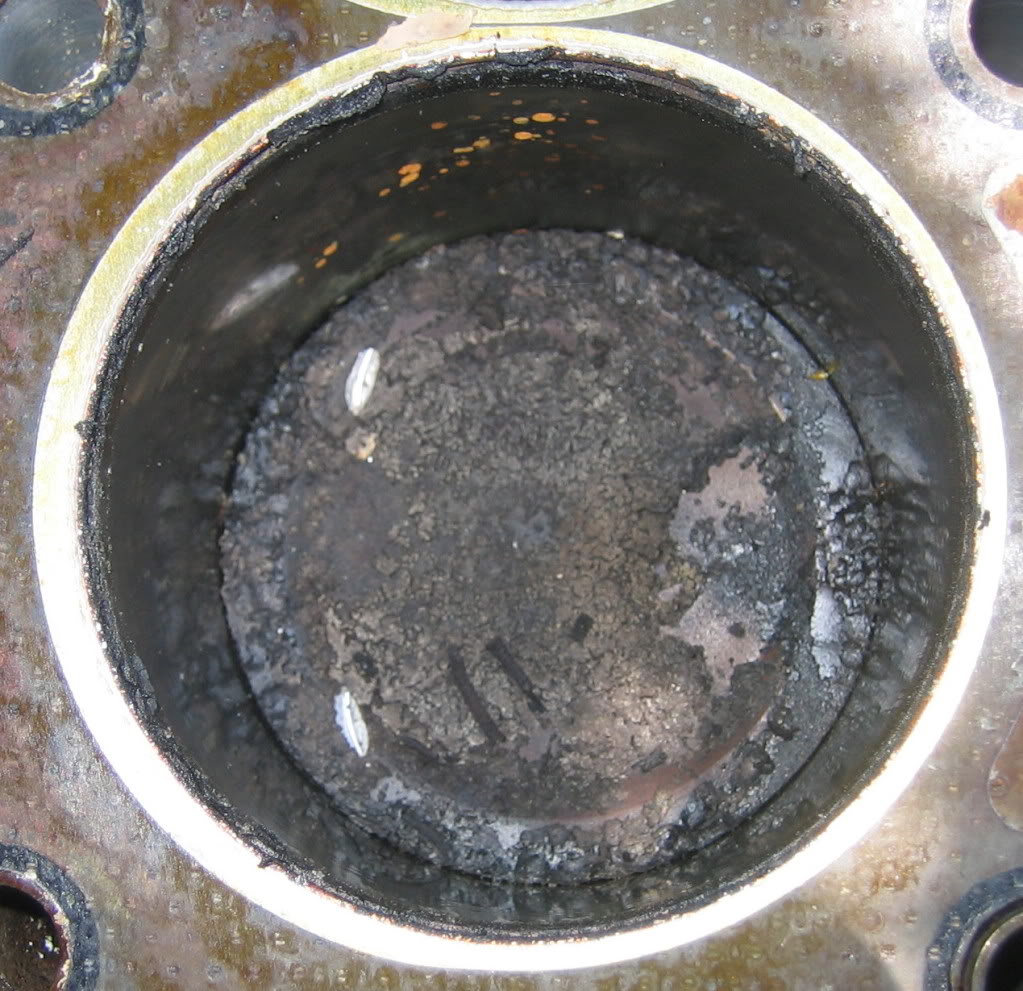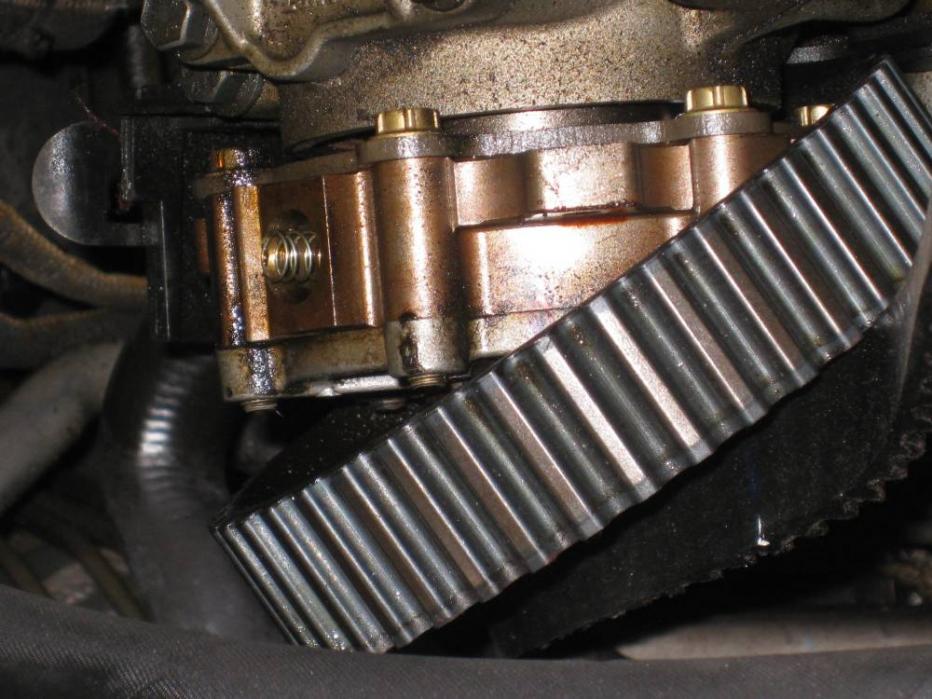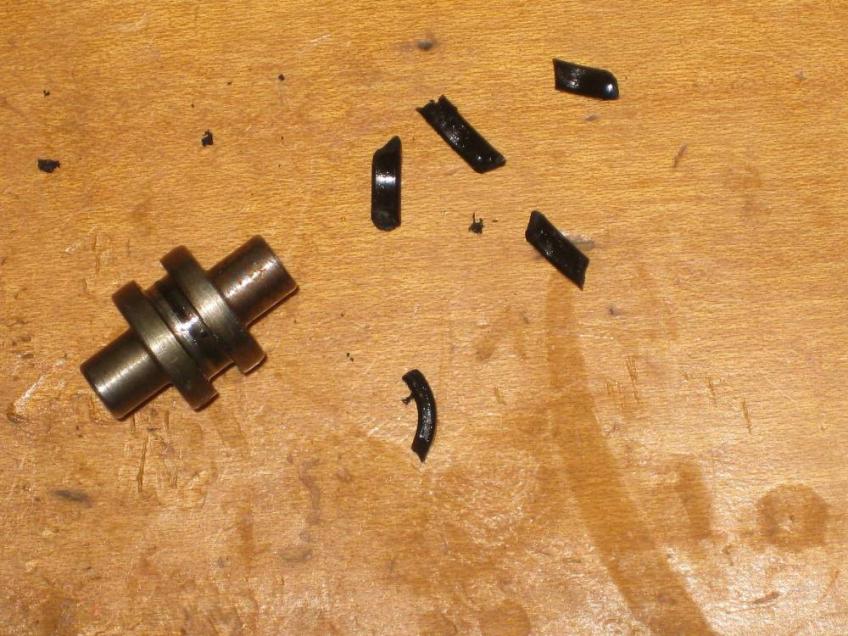Crank/Cam position sensors suddenly dead
#1
Hello again everyone
Well here I am at my vehicles mercy again.
I had a physics class at 7:50 AM and I'm still home with the car parked on the street. And street cleaning is in less than 4 hours (****ing fantastic).
Allright, I will cut to the chase
The car is a 2002 S40 1.9T
I went to start the car this morning around 7, it was cold for LA, but not too bad, mid 50s if that.
The car started beautifully, purred for a second or two while I had a fight with the air conditioner not to try and freeze me. Then suddenly, cough cough and she died.
I didn't panic, it was cold(ish) and I thought maybe it just needs some time to get decently warm. So tried to crank again.... and again.... and again.... and then I realized, the car isn't going to start. I thought I had choked it from trying to start so many times, I let it sit for 20 minutes. When I came back, I brought my OBD II code reader to see if anything had registered. I got P0335 as a full on DTC code, and P0341 P0336 as pending codes.
Tried to start the car again, nada. Popped the hood, smelled gas, I figure there is no spark because the computer doesn't know WTF is going.
I recently changed the oil (not 3 days ago), I have driven the car plenty since then, no hint of problems, no check engine light, not a stutter, always cranked over on the first shot. Then today, it cranks over from the first try, but the suddenly died.
Do you guys think I should trust the computer and try changing the crankshaft AND camshaft sensors? They aren't cheap, and frankly I'm sick and tired of wasting time and money on this car, if you have any advice that might spare me a few bucks or minutes, please share.
I am having some doubts that both sensors would suddenly die within seconds of working... After all I was technically successful in starting the car this morning. Do you think if I erased the DTC codes and disconnected/reconnected the battery, the computer might try to run the engine again?
Well here I am at my vehicles mercy again.
I had a physics class at 7:50 AM and I'm still home with the car parked on the street. And street cleaning is in less than 4 hours (****ing fantastic).
Allright, I will cut to the chase
The car is a 2002 S40 1.9T
I went to start the car this morning around 7, it was cold for LA, but not too bad, mid 50s if that.
The car started beautifully, purred for a second or two while I had a fight with the air conditioner not to try and freeze me. Then suddenly, cough cough and she died.
I didn't panic, it was cold(ish) and I thought maybe it just needs some time to get decently warm. So tried to crank again.... and again.... and again.... and then I realized, the car isn't going to start. I thought I had choked it from trying to start so many times, I let it sit for 20 minutes. When I came back, I brought my OBD II code reader to see if anything had registered. I got P0335 as a full on DTC code, and P0341 P0336 as pending codes.
Tried to start the car again, nada. Popped the hood, smelled gas, I figure there is no spark because the computer doesn't know WTF is going.
I recently changed the oil (not 3 days ago), I have driven the car plenty since then, no hint of problems, no check engine light, not a stutter, always cranked over on the first shot. Then today, it cranks over from the first try, but the suddenly died.
Do you guys think I should trust the computer and try changing the crankshaft AND camshaft sensors? They aren't cheap, and frankly I'm sick and tired of wasting time and money on this car, if you have any advice that might spare me a few bucks or minutes, please share.
I am having some doubts that both sensors would suddenly die within seconds of working... After all I was technically successful in starting the car this morning. Do you think if I erased the DTC codes and disconnected/reconnected the battery, the computer might try to run the engine again?
#3
Sure was the timing belt
We towed the vehicle to a mechanic, and I received the grave news. As with many volvos, oil had been spilling into the timing belt compartment, it got loose and out of sync, more than likely bent valves, probably needs a new head. Astronomical cost to repair, I'm still weighing my options. If I can get a place to work in, I can probably fix it for a grand or so, or I can just buy a different engine, which still gives no guarantees... We were considering sending the car to a junk yard and just getting a different car altogether, but I think my dad and I are both reluctant to let it go that easy.
Anyway, still in the thinking phase, we'll see what happens.
What sucks is, I had been hearing an annoying slapping noise coming from under the hood. But it wasn't metallic in nature, it sounded more like a plastic sheet hitting the fender or something. Since this car is so low in the front, and often grinds on driveways and dips, I thought the front bumper had something loose. I kept checking and trying to find where it was coming from, but couldnt pin point it. The sound only happened when the engine was being revved. I THOUGHT this was because the engine was vibrating but now I know, it was the loose timing belt slapping against its cover. Which makes me extremely frustrated because I could have avoided this whole ordeal if I had just checked the belt.
To anyone out there, if you hear that slapping noise that sounds like plastic hitting something fast, don't be fooled, check the timing belt and save the car before it wrecks itself!
We towed the vehicle to a mechanic, and I received the grave news. As with many volvos, oil had been spilling into the timing belt compartment, it got loose and out of sync, more than likely bent valves, probably needs a new head. Astronomical cost to repair, I'm still weighing my options. If I can get a place to work in, I can probably fix it for a grand or so, or I can just buy a different engine, which still gives no guarantees... We were considering sending the car to a junk yard and just getting a different car altogether, but I think my dad and I are both reluctant to let it go that easy.
Anyway, still in the thinking phase, we'll see what happens.
What sucks is, I had been hearing an annoying slapping noise coming from under the hood. But it wasn't metallic in nature, it sounded more like a plastic sheet hitting the fender or something. Since this car is so low in the front, and often grinds on driveways and dips, I thought the front bumper had something loose. I kept checking and trying to find where it was coming from, but couldnt pin point it. The sound only happened when the engine was being revved. I THOUGHT this was because the engine was vibrating but now I know, it was the loose timing belt slapping against its cover. Which makes me extremely frustrated because I could have avoided this whole ordeal if I had just checked the belt.
To anyone out there, if you hear that slapping noise that sounds like plastic hitting something fast, don't be fooled, check the timing belt and save the car before it wrecks itself!
#4
Sad news about your engine.
Given that the car was stationery and presumeably just at idling revolutions when it cut out you need to pray that the internal damage is less extensive as oposed to a highway speed failure.
Oil spraying around anywhere a cambelt is always a recipe for disaster and needs immediate action.
Given that the car was stationery and presumeably just at idling revolutions when it cut out you need to pray that the internal damage is less extensive as oposed to a highway speed failure.
Oil spraying around anywhere a cambelt is always a recipe for disaster and needs immediate action.
#5
Unfortunately this has happened to many of us. When mine slipped the car had been leaking oil onto the ground as well as making the noise you describe. Mine bent all 8 exhaust valves. The fix was not too bad really. About $500-$600 in parts. If you have the tools then it's very doable. The worst part is the CVVT gear (the part that leaks oil). To replace it you really should buy the Volvo cam holder tool. They are pricey though. I bet you could easily sell it after to recover most of your money.
Volvo Camshaft Alignment Set (Rear) (V9995452 Alternative)
Here is a pic of one damaged piston. See the oval shiny spots top left and bottom left? I very gently and carefully removed the divets on the aluminum pistons with a die grinder then used a drill with wire brush to clean the crud off so they were all shiny again.

Volvo Camshaft Alignment Set (Rear) (V9995452 Alternative)
Here is a pic of one damaged piston. See the oval shiny spots top left and bottom left? I very gently and carefully removed the divets on the aluminum pistons with a die grinder then used a drill with wire brush to clean the crud off so they were all shiny again.

Last edited by Hudini; 03-13-2014 at 10:36 AM.
#6
Hmm, I see
I bet I can find a used one on e-bay in that case, hopefully a bit cheaper
What is the purpose of it though? Does it just make things easier? less time consuming? or is just damn near impossible to work without it?
On another note, any idea how to fix the damn leak? I'd hate to spend so much time and money fixing it only to have it repeat a few months later...
Would you suggest a new CVVT gear/camshaft?
One of my buddies told me there are garages that you can rent out hourly, they have all the necessary for car work, jacks, engine hoists, wrenches/sockets, compressed air etc...
I'm going to look into it, but if I do choose to pay hourly to work on the car, I want to make sure I get everything I will need, and work fast.
I bet I can find a used one on e-bay in that case, hopefully a bit cheaper
What is the purpose of it though? Does it just make things easier? less time consuming? or is just damn near impossible to work without it?
On another note, any idea how to fix the damn leak? I'd hate to spend so much time and money fixing it only to have it repeat a few months later...
Would you suggest a new CVVT gear/camshaft?
One of my buddies told me there are garages that you can rent out hourly, they have all the necessary for car work, jacks, engine hoists, wrenches/sockets, compressed air etc...
I'm going to look into it, but if I do choose to pay hourly to work on the car, I want to make sure I get everything I will need, and work fast.
#7
The tool is absolutely nessesary. I can see getting the gear off without it, but no torqing it back down. When I replaced my CVVT Gear I bought a cam locking tool on eBay for $65. It was a cheap aftermarket, and only included the cam locking part, not the other parts needed to remove the valve cover. But since it looks like you will be repairing valves you need the entire kit, I think they were about $125.
As for the leak, it probobly was leaking directly from the CVVT gear itself. You can look at the gear and find the little plunger that sits in a shallow divit. If its leaking oil will be pooling there. Here is a post that has a good image of it:
https://volvoforums.com/forum/volvo-...b-cover-60773/
The gears run $165 free ship on eBay, and mine was shipped from a Volvo dealership somewhere. Even it the gear doesn't seem to be leaking I would replace it, as they all seem to leak eventually. And new cam seals are cheap so you may as well replace those while you are in there.
Good luck with the repair, let us know how it goes.
As for the leak, it probobly was leaking directly from the CVVT gear itself. You can look at the gear and find the little plunger that sits in a shallow divit. If its leaking oil will be pooling there. Here is a post that has a good image of it:
https://volvoforums.com/forum/volvo-...b-cover-60773/
The gears run $165 free ship on eBay, and mine was shipped from a Volvo dealership somewhere. Even it the gear doesn't seem to be leaking I would replace it, as they all seem to leak eventually. And new cam seals are cheap so you may as well replace those while you are in there.
Good luck with the repair, let us know how it goes.
#8
As Livens wrote the cam locking tool is necessary. This is because the CVVT gear can be installed in any position. Unlike the intake cam gear with 3 bolts, the CVVT gear has only a single large bolt holding it to the exhaust cam. There is no reference mark or woodruff key to hold it in the correct position. Get it off a few degrees and you get the CEL for cam over/under advanced. Get it off more than that and you can bend valves again.
You replace the CVVT because it is the source of the leak. Specifically, the little plunger looking thing. Now several folks have tried replacing the o-ring on the plunger but so far I haven't heard of it staying fixed for more than a short while. I chose to replace the CVVT with new because I'm not there to check it for leaks everyday. Really up to you.
Here are a few reference photos. First is the outer CVVT gear teeth removed to reveal the plunger thingy.

Next is the plunger thingy with o-ring in bits.

You replace the CVVT because it is the source of the leak. Specifically, the little plunger looking thing. Now several folks have tried replacing the o-ring on the plunger but so far I haven't heard of it staying fixed for more than a short while. I chose to replace the CVVT with new because I'm not there to check it for leaks everyday. Really up to you.
Here are a few reference photos. First is the outer CVVT gear teeth removed to reveal the plunger thingy.

Next is the plunger thingy with o-ring in bits.

#9
As Livens wrote the cam locking tool is necessary. This is because the CVVT gear can be installed in any position. Unlike the intake cam gear with 3 bolts, the CVVT gear has only a single large bolt holding it to the exhaust cam. There is no reference mark or woodruff key to hold it in the correct position. Get it off a few degrees and you get the CEL for cam over/under advanced. Get it off more than that and you can bend valves again.
You replace the CVVT because it is the source of the leak. Specifically, the little plunger looking thing. Now several folks have tried replacing the o-ring on the plunger but so far I haven't heard of it staying fixed for more than a short while. I chose to replace the CVVT with new because I'm not there to check it for leaks everyday. Really up to you. ...
You replace the CVVT because it is the source of the leak. Specifically, the little plunger looking thing. Now several folks have tried replacing the o-ring on the plunger but so far I haven't heard of it staying fixed for more than a short while. I chose to replace the CVVT with new because I'm not there to check it for leaks everyday. Really up to you. ...
But even after quintuple checking everything my heart was going 100mph before I cranked her over that first time! Practically passed out when she started right up and ran smooth.
#10
Point taken, I will buy purchasing the tool, haha
That would truly suck to crank it over after all that work and bend brand new valves.
Thank you all for the great advice, I think I will video tape the procedure when I get to it and post it online for others. I will also take pictures, hopefully they will find someone in need.
I expect this will take a while to accomplish, months maybe, I am very busy at the moment, and my money tree has been fruitless during the recent drought D':
Thanks again!
That would truly suck to crank it over after all that work and bend brand new valves.
Thank you all for the great advice, I think I will video tape the procedure when I get to it and post it online for others. I will also take pictures, hopefully they will find someone in need.
I expect this will take a while to accomplish, months maybe, I am very busy at the moment, and my money tree has been fruitless during the recent drought D':
Thanks again!
Thread
Thread Starter
Forum
Replies
Last Post




